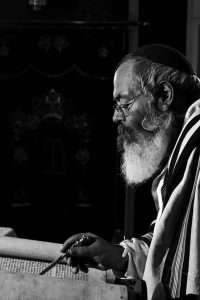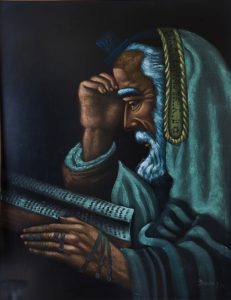Many years ago, my late uncle Shraga (z”l) brought home a large painting of a rabbi. He was so proud that he had “brought him back to the fold”. From the first moment I set eyes on that painting, I was fascinated by it.
Since becoming more religious, I have been invited to many homes for the Sabbath and High Holy days. As a photographer, I always find myself compelled to seek out any photographs my hosts might have on display. More often than not, I have found that orthodox Jews will display, even more prominently than family portraits, photographs of great rabbis.
However, I couldn’t help noticing, that the vast majority of these photographs are not formal portraits. They are usually candid photos, snapshots taken on the spur of the moment, without any thought for lighting, composition, or even facial expression, and sometimes done without the knowledge of the rabbi.
Why not create formal portraits of rabbis? A high quality photograph that will honour the position of rabbi, while at the same time bringing into focus the gravitas, the wisdom, the accrued knowledge, the compassion, or even the humour of each individual rabbi.
This has become my passion project: a book of 90 (five times חי ) black & white portraits of rabbis.
Rather than accompany each portrait with a short biography of the subject, or a list of his accolades, I feel that it is far more relevant to reinforce the primary goal of the rabbi: to bring people closer to the Torah. To that end I am asking each rabbi to choose a single passage from the Pentateuch to be printed beside his portrait. I am not asking for an explanation or commentary. It does not have to be the one he deems the most important. It can be a passage that reminds him of the day he met his wife, or even one that makes him laugh.
The rest would be left to you, the reader. Upon reading the chosen passage and studying the face of a rabbi, perhaps you’ll be curious as to why he chose that particular sentence? Maybe your curiosity will inspire to study that passage further.
After consulting with several publishing firms, I have determined that the cost of printing, publishing, and distribution of the finished book. It has also become apparent to me that in order to complete the total ninety-nine portraits in a timely manner, I need to be able to free up some time. I am also very well aware that a book of portraits of Toronto rabbis, or even Canadian rabbis probably won’t sell very well. I will need to bee able to afford to travel to other parts of North America in order to create a reasonable cross-section of rabbis that will attract a much larger number of readers.

